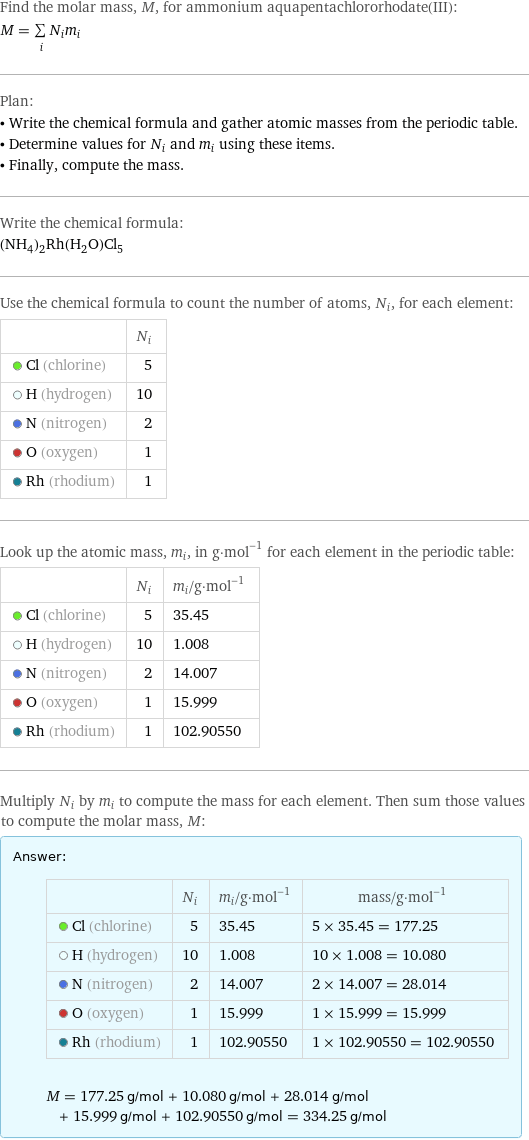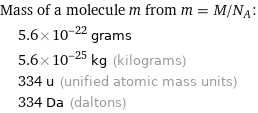Input interpretation

ammonium aquapentachlororhodate(III) | molar mass
Result

Find the molar mass, M, for ammonium aquapentachlororhodate(III): M = sum _iN_im_i Plan: • Write the chemical formula and gather atomic masses from the periodic table. • Determine values for N_i and m_i using these items. • Finally, compute the mass. Write the chemical formula: (NH_4)_2Rh(H_2O)Cl_5 Use the chemical formula to count the number of atoms, N_i, for each element: | N_i Cl (chlorine) | 5 H (hydrogen) | 10 N (nitrogen) | 2 O (oxygen) | 1 Rh (rhodium) | 1 Look up the atomic mass, m_i, in g·mol^(-1) for each element in the periodic table: | N_i | m_i/g·mol^(-1) Cl (chlorine) | 5 | 35.45 H (hydrogen) | 10 | 1.008 N (nitrogen) | 2 | 14.007 O (oxygen) | 1 | 15.999 Rh (rhodium) | 1 | 102.90550 Multiply N_i by m_i to compute the mass for each element. Then sum those values to compute the molar mass, M: Answer: | | | N_i | m_i/g·mol^(-1) | mass/g·mol^(-1) Cl (chlorine) | 5 | 35.45 | 5 × 35.45 = 177.25 H (hydrogen) | 10 | 1.008 | 10 × 1.008 = 10.080 N (nitrogen) | 2 | 14.007 | 2 × 14.007 = 28.014 O (oxygen) | 1 | 15.999 | 1 × 15.999 = 15.999 Rh (rhodium) | 1 | 102.90550 | 1 × 102.90550 = 102.90550 M = 177.25 g/mol + 10.080 g/mol + 28.014 g/mol + 15.999 g/mol + 102.90550 g/mol = 334.25 g/mol
Unit conversion

0.3342 kg/mol (kilograms per mole)
Comparisons

≈ 0.46 × molar mass of fullerene ( ≈ 721 g/mol )

≈ 1.7 × molar mass of caffeine ( ≈ 194 g/mol )

≈ 5.7 × molar mass of sodium chloride ( ≈ 58 g/mol )
Corresponding quantities

Mass of a molecule m from m = M/N_A: | 5.6×10^-22 grams | 5.6×10^-25 kg (kilograms) | 334 u (unified atomic mass units) | 334 Da (daltons)

Relative molecular mass M_r from M_r = M_u/M: | 334